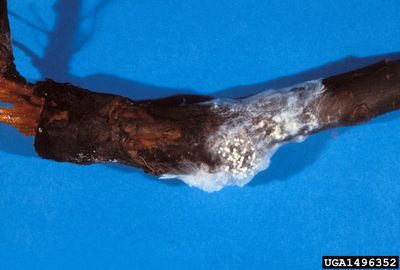Southern Blight of Apples
For years, scientists thought that southern blight in apple trees was only a problem in warm climates. They believed that the fungus structures that overwinter were not cold hardy. However, this is no longer considered true. Gardeners in Illinois, Iowa, Minnesota, and Michigan have reported incidents of southern blight of apples. It is now known that the fungus can survive winter cold, especially when it is covered up and protected by layers of snow or mulch. The disease is mostly an issue in apple growing areas in the Southeast. Although the disease is often called southern blight of apples, apple trees are not the only hosts. The fungus can live on some 200 different types of plants. These also include field crops and ornamentals like:
Daylily Astilbe Peonies Delphinium Phlox
Symptoms of Southern Blight in Apple Trees
The first signs that you have apple trees with southern blight are beige or yellow, web-like rhizomorphs. These growths appear on the lower stems and roots of the trees. The fungus attacks the lower branches and the roots of apple trees. It kills the tree’s bark, which girdles the tree. By the time you notice that you have apple trees with southern blight, the trees are on their way to dying. Typically, when trees get southern blight of apples, they die within two or three weeks after the symptoms appear.
Southern Blight Apple Treatment
So far, no chemicals have been approved for southern blight apple treatment. But you can take steps to limit your tree’s exposure to southern blight of apples. Reduce losses from apple trees with southern blight by taking a few cultural steps.
Burying all organic material may help since the fungus grow on organic material in the soil. You should also regularly remove weeds near the apple trees, including crop residue. The fungus can attack growing plants. You can also select the apple stock most resistant to the disease. One to consider is M.9.
